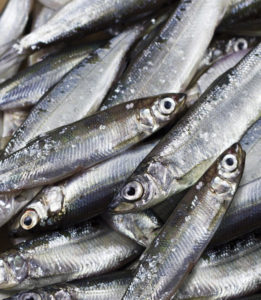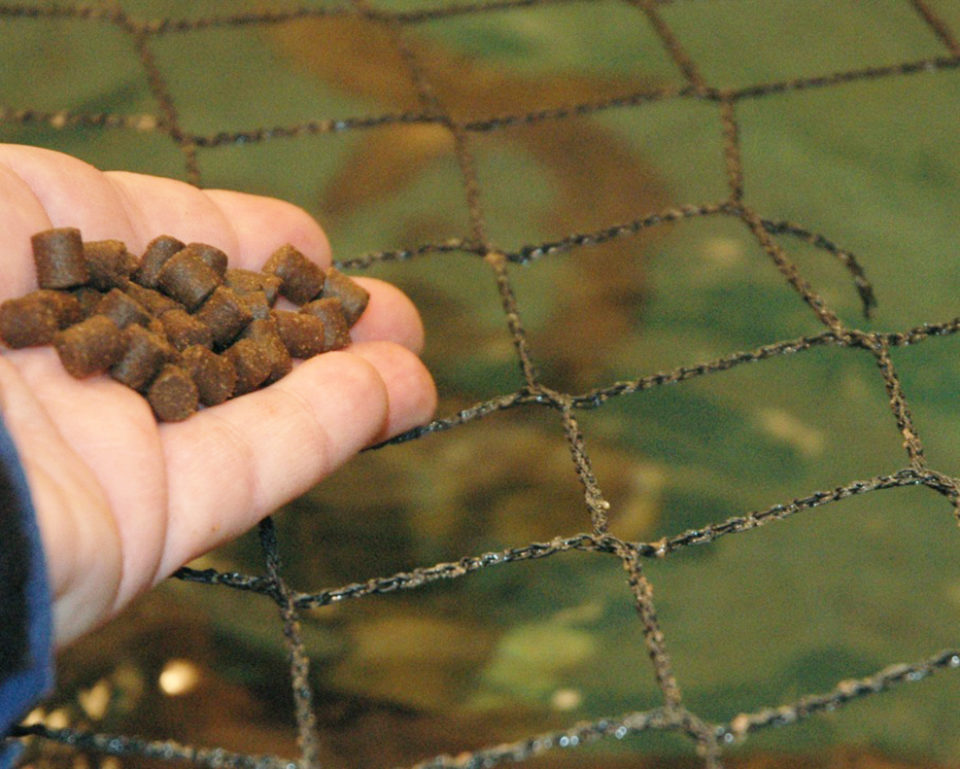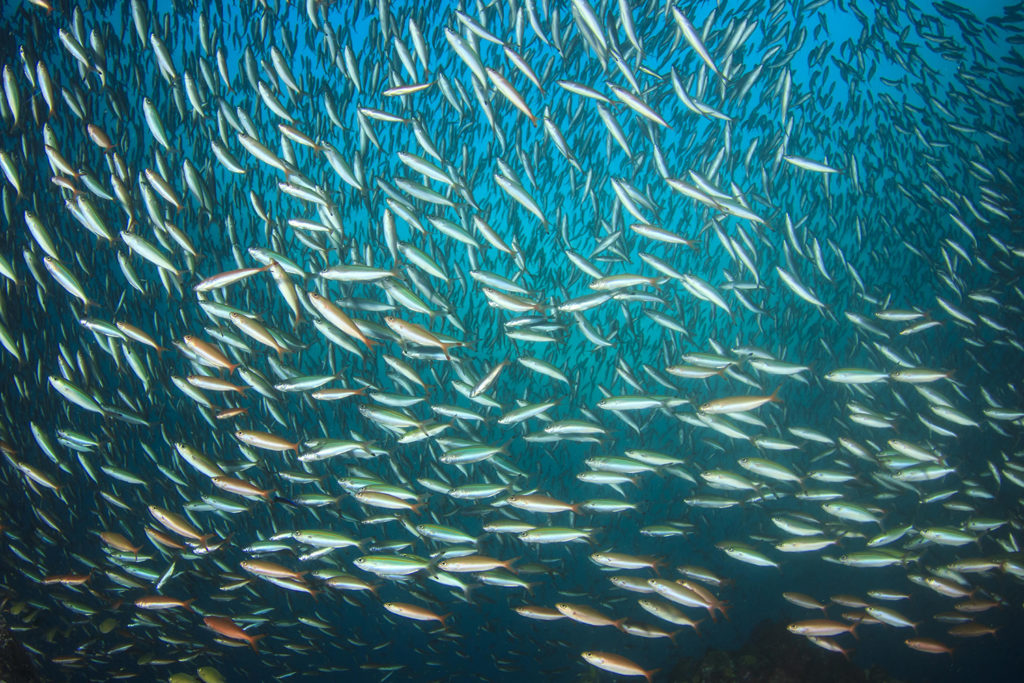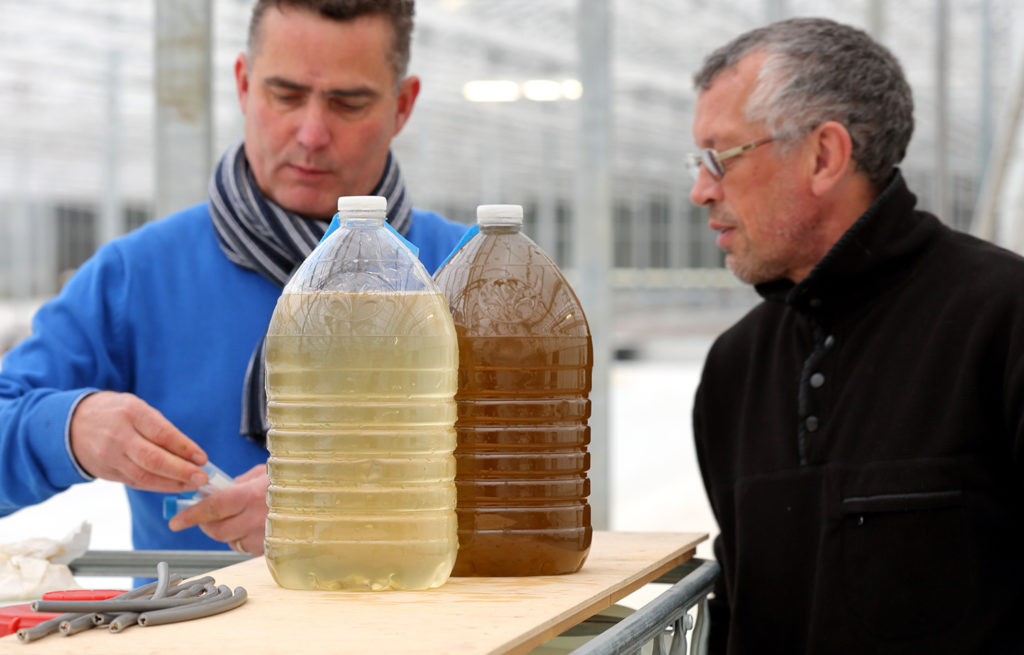Fishmeal industry makes biological, economic, social arguments

Recent reports in the media and from some lobby groups have misrepresented the value of small fish and ignored the good management practices now in place in many fisheries and improvement projects driven by market demand. Claims that it is wrong to feed fish to farmed fish ignore the decreasing amounts of fishmeal used in feed, the increasing amounts of fishmeal recovered from the byproducts of fish processing that would otherwise be waste and the lack of markets for direct human consumption of small, bony fish.
It is also important to remember that the natural diet of many farmed fish species is predominantly other fish, which provides them the optimal nutrition. The use of alternative non-marine sources of protein and oil can carry anti-nutritional factors that compromise growth and fish health. To date, only marine ingredients provide the long-chain omega-3 oils in farmed fish that are important for good human nutrition.
Low-level species
The use of small, bony fish for reduction to a dried protein (fishmeal) and oil fractions is a well-established industry and was historically based on stocks of fish for which there was little or no direct human consumption market. Populations of these species can be huge. The largest fishery in the world, with an annual catch of approximately 5 million metric tons (MMT), is for the Peruvian anchoveta.
The fish are near the beginning of the food chain and can be grouped under a heading of low-trophic-level species (LTLS). The protein and oil they contain, however, can be used in a number of applications, the most important of which is as ingredients for farmed animal feed and, in the case of oil, for health food supplements.
Recently, concerns have been expressed over this industry, claiming the use of LTLS species for animal feed deprives marine animals as well as local communities of a nutritious food source. Fisheries are said to be badly managed and environmentally unsustainable. Farmed fish consume more wild fish than they convert to growth, critics say.
The biological argument
In 2012, the Lenfest Ocean Program report “Little Fish, Big Impact” highlighted the views of a wide panel of fishery scientists on the vulnerability of forage fish, i.e., the small species that form the prey for larger fish and marine mammals. The report called for more precautionary approaches to stock management to recognize the dependence of the wider ecosystem on a stock, rather than managing the stock to maintain a reproductive and viable population of the target species. While the need for an ecosystem approach is becoming more recognized, many of the Lenfest reports’s conclusions were based on questionable economic arguments.
The 2014 “State of World Fisheries and Aquaculture” (SOFIA) report from the Food and Agriculture Organization (FAO) of the United Nations highlighted the problem of so-called “trash fish,” low-value species caught in Southeast Asia’s tropical trawl fisheries by fine-mesh nets and used in fishmeal. This is a different situation than fishmeal from well-managed stocks and is clearly an unsustainable practice. Members of the IFFO – The Marine Ingredients Organisation are working with governmental and non-governmental organization (NGO) partners to introduce better practices in this region.
Fishery science is an evolving area, and as with any field, scientific opinions vary. However, there is widespread acceptance by members of IFFO that all stocks must be managed in a responsible manner to ensure the long-term survival of the industry and the fish stocks on which it relies. The main stock used for reduction, Peruvian anchoveta, was recognized in a 2008 study by the Fisheries Centre at the University of British Columbia in Canada as well managed. The permitted catch is regulated each year to protect recruitment of juveniles and in response to environmental changes.
Approximately 42 percent of the global fishmeal and fish oil production comes from factories that are certified to the IFFO Responsible Supply standards, an independent third-party scheme that is accredited under ISO 65 guidelines and includes a requirement to observe the FAO Code of Conduct for Responsible Fisheries.
The level of precaution applied to the stock management is a matter for regulators, who should balance the need for a healthy ecosystem with the need for a viable industry, making decisions based on the best and most current scientific advice. IFFO members support responsible management of fisheries and believe calls to remove fishmeal from animal feeds ignore the availability of responsibly sourced raw material and remove incentive for improvement.

The social argument
Many countries, particularly in the developing world, have poor nutrition, and the protein contained in LTLS fish caught locally is a possible option. There is an argument for local fish to be directed for human consumption rather than conversion to feed for high-value farmed species for export to other markets.
However, this assumes the local consumers want to eat the wild species landed and denies the community of earning income from farming that can be used for discretionary purchases of food or other goods and services. Despite years of marketing and promotion by government and independent activists, the consumption of anchoveta in Peru for human consumption is still extremely low at around 2 percent of the catch, leaving a significant surplus.
A recent trend finds fewer whole fish used in fishmeal production. Species that previously were reduced, such as herring, mackerel and blue whiting, now have human consumption markets offering better returns for fishers and processors. This reduction has been offset by an increasing amount of byproducts and trimmings from fish processing entering fishmeal production. FAO’s latest SOFIA report estimated that 35 percent of all raw material now comes from recovered by-products and is likely to increase.
A 2012 report for FAO concluded that feeding fishmeal and fish oil to farmed fish and crustaceans did not deprive communities of food, but increased the effective annual supply of fish for human consumption by 7 to 8 MMT. “Halting industrial fishing would lead to an immediate loss of fish for food,” the report said. “The practice of using fish as feed is viable, that is, is capable of surviving as a practice within the coming decades.”
Annual fishmeal production has been steady at around 4.5 MMT for the last few years, yet feed volumes have increased with the growth of aquaculture, necessitating a reduction in the percentage of fishmeal used. Much of the protein content has already been substituted with soya and other land-based proteins to the level where further reductions could incur a penalty in fish growth or health. Typical inclusion rates for farmed salmon diets are now at around 10 percent fishmeal, compared to 40 percent or more in the past.
Small species of oily fish of the kind used in fishmeal and fish oil can be rich in the important long-chain omega-3 fatty acids. If there is no direct human consumption of these species, inclusion in the diets of farmed fish can transfer these nutrients into products demanded by consumers.
The economic argument
Although, in principle, it would be wrong to deprive local populations of fish for direct human consumption, there is also the consideration of the rights of fishers to market their catch for their best return. If they receive greater economic returns by selling their catches for reduction rather than direct human consumption, regulators would be interfering with market mechanisms and the livelihoods of fishers if policies seek to influence sales.
One of the main references arguing against the use of small species of fish for the production of fishmeal is the previously mentioned Lenfest report “Little Fish, Big Impact.” This report quoted the value of forage fisheries globally as $5.6 billion, compared to the value of the larger fish that eat them at $11.3 billion. Therefore, it is better to leave these fish in the water as food for larger, more valuable fish. Unfortunately, this argument is flawed for several reasons.
The price of forage fish in the report was taken from a database published in 2007 by U. R. Sumaila and co-workers. This database itself was compiled from prices collected between 1950 and 2002. For much of this period, forage fish had little or no value, and fish oil was routinely burned for fuel. Now, with the opening of markets for health supplements and animal feed since the 1990s, the last decade of the database period, the value of fish oil has increased by four to five times, and the value of fish protein has tripled, with a corresponding increase in the value of the catch.
The report compared the landed price of, for example, anchoveta with that of tuna. This compared two different stages of the food chain and undervalued the LTLS fish, which as stated, have little value as whole fish. Their value is realized when they are reduced to their constituent protein and oil for further applications. A more relevant comparison would use prices of products as consumed by humans, for example, farmed salmon partly fed on fishmeal from anchoveta versus tuna.
In hunting prey, predators like tuna expend a significant amount of energy that is therefore not available for growth. Farmed fish, partly fed on fishmeal, are fed without the need to hunt and convert far more of the energy consumed to growth.
There are many claims that farmed fish consume five or more times their body weights in wild fish through their diets. This figure is completely out of date, as fishmeal levels in diets have been reduced in favor of soya and other non-marine protein sources. Taken across all species of farmed fish that are given feed, about 1 kg of fish is grown for each 0.3 kg of whole fish used in the diet. Farmed fish are net producers of fish protein.
The higher-value farmed species most in demand perform best when their diets includes a percentage of fishmeal. Removing fishmeal requires the use of alternative protein sources, usually vegetable, which can incur a growth penalty and may compromise the health of the fish, both resulting in costs to farmers.
Next steps
IFFO members have demonstrated their commitment to responsible fishery management and will continue to engage with other stakeholders to apply good management practices. Improved programs and liaison with the scientific and NGO communities are key parts of the effort to raise standards for the future. In conjunction with this, IFFO will communicate with regulators and policy makers to help them make informed decisions based on accurate, current data and good science.
Editor’s Note: This article was based on a longer document available at www.iffo.net/node/602 that represents the views of the members of IFFO, the international trade association for the fishmeal, fish oil and wider marine ingredients industry. IFFO members represent over 50 percent of the global production of fishmeal and fish oil and approximately 75 percent of the traded value.
(Editor’s Note: This article was originally published in the September/October 2014 print edition of the Global Aquaculture Advocate.)
Author
-
IFFO – The Marine Ingredients Organisation
Unit C, Printworks
22 Amelia Street
London SE17 3BZ United Kingdom[116,101,110,46,111,102,102,105,64,116,97,105,114,97,116,101,114,99,101,115]
Related Posts

Aquafeeds
IFFO: Future contributions of marine ingredients in aquafeeds
Fishmeal is still the most nutritious source of protein for aquaculture diets, having a wide range of essential amino acids and a high digestibility, while fish oil is still the only commercially available source of long chain omega-3 for aquaculture diets – both are the foundation of aquafeeds.

Aquafeeds
A look at protease enzymes in crustacean nutrition
Food digestion involves digestive enzymes to break down polymeric macromolecules and facilitate nutrient absorption. Enzyme supplementation in aquafeeds is a major alternative to improve feed quality and nutrient digestibility, gut health, compensate digestive enzymes when needed, and may also improve immune responses.

Aquafeeds
A new nutrient for aquaculture, from microbes that consume carbon waste
Biotechnology firm NovoNutrients aims to produce a line of nutraceutical aquafeed additives as well as a bulk feed ingredient that can supplement fishmeal. Its process includes feeding carbon dioxide from industrial gas to a “microbial consortium” starring hydrogen-oxidizing bacteria.

Innovation & Investment
Algae innovators aim to freeze out early-stage shrimp losses
A greenhouse in Belgium believes its innovative shrimp feed product, made from freeze-dried microalgae, packs the necessary nutrients for the crustacean’s most vulnerable life stage: the first three days of its life.


